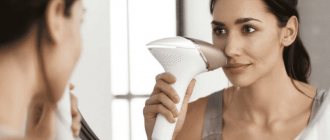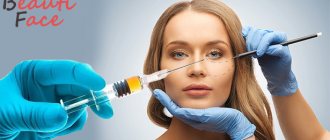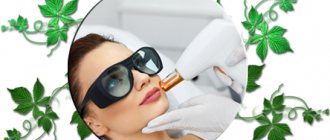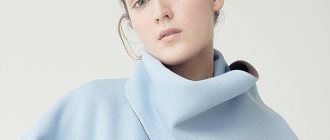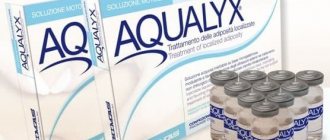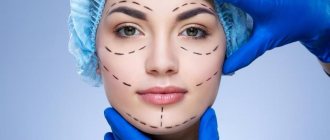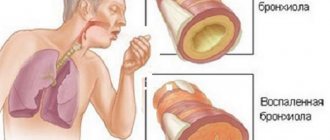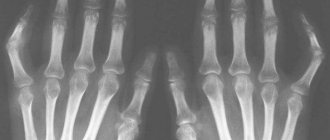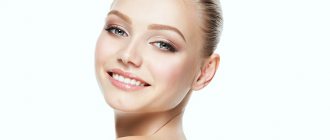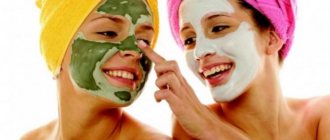What is phototherapy?
Today, dermatologists and cosmetologists widely offer such a procedure as phototherapy (light therapy, phototherapy). Skin treatment is considered effective if phototherapy procedures are used. During the session, the therapeutic effect is achieved by exposing the skin to regular ultraviolet rays.
To achieve the most positive effect, phototherapy is recommended to be used in courses and under the strict supervision of a professional. An experienced specialist will calculate the duration and number of courses, taking into account factors such as your skin type, hormonal status, individual characteristics of your body, and existing problems.
Treatment can be carried out both on an outpatient basis and at home, of course, with the permission of your attending physician. In the second case, you need to have special equipment at home.
The tools used for carrying out procedures are dichroic, LED, laser and fluorescent light sources. In this way, it is possible to control the level of penetration of electromagnetic waves into nervous and vascular structures, as well as into the skin.
The biostimulating effect of light radiation, which is used when phototherapy procedures are carried out, has not only a healing effect on the human body, but also a preventive effect, skin treatment is carried out. This is how the synthesis of hormones and enzymes is adjusted, metabolic processes are improved, nutrition and respiration of tissues and organ cells are restored. As a result of increased phagocyte activity and increased production of immunoglobulins, overall blood quality indicators improve. Studies have proven that the consequence of a course of phototherapy is the strengthening of the body’s immune defense and, as a result, its resistance to negative environmental factors improves.
Definition of the concept
Phototherapy is a type of art therapy in which healing of the soul occurs with the help of photographs. In Canada, Judy Weiser is considered the founder of this direction of psychocorrection. The Canadian technique was tested in Russia by A.I. Kopytin, who in the course of experimental work proved that the method is applicable for various activities. This allowed phototherapy to become one of the tools of art therapists both in group and individual work.
In psychology, using phototherapy, it is possible to reunite a person’s past, present and future, stimulate cognitive activity, fantasy and imagination of the individual. A person can find harmony not only by doing photography, but also by looking at images in magazines or photographs taken by other people.
History of origin
The art of photography appeared in 1822. Already in 1844, the doctor Thomas Kirkbride tried to use a magic lantern in working with mentally ill people. In 1856, physician Hug Diamond experimentally developed a method of therapeutic photography.
In 1973, Judy Weiser published her experience using photography in working with deaf children in a scientific journal. Since the article aroused great interest among readers, many wrote letters to the author, wanting to know in more detail what it is, how to use phototherapy. Judy Weiser in 1975 organized training for psychotherapists on the use of non-traditional technology of correctional activities in their work. Later, the master class “Phototherapy as a new type of art therapy” was conducted by a team of famous psychotherapists in the USA.
Indications
Let's look at what medical history indicates treatment with light therapy. Despite the fact that the popularity of the procedure is growing day by day, phototherapy sessions should be recommended by the treating specialist.
Indications for phototherapy procedures include a wide range of skin diseases, including:
- eczema;
- neurodermatitis of various origins;
- psoriasis.
Phototherapy effectively helps to get rid of trophic ulcerative formations. Positive results are also achieved in cases where there is a need to give the skin an aesthetic appearance.
During the procedures, areas of excessive pigmentation fade, spider veins disappear, and wrinkles become less noticeable.
Experts may recommend exposure to ultraviolet rays through phototherapy procedures as part of complex therapy for the treatment of:
- seasonal and non-seasonal depressive states;
- mental disorders;
- with late sleep syndrome.
Phototherapy will be useful in cases where your body needs a quick recovery from a number of stressful situations, which include long flights and accompanying jet lag (de-synchronization of the biological clock).
The desensitizing properties of light make it indispensable for such diagnoses as:
- bronchial asthma;
- arthritis of allergic origin;
- allergies of various types.
The phototherapy procedure has a resolving and analgesic effect in cases of:
- muscle pain and neuralgic pain;
- in chronic and subacute inflammatory processes.
Today, phototherapy procedures are increasingly being introduced into maternity hospitals - in order to relieve symptoms and prevent complications with such a diagnosis as jaundice of a newborn.
Watch a video about how phototherapy is used for newborns:
In many cases, thanks to light therapy, significant progress can be achieved in the fight against skin cancer.
Features of the procedure
For phototherapy sessions in a hospital setting, it is customary to use special neonatal phototherapeutic irradiators. The child is placed in a specially equipped incubator, and an ultraviolet lamp is placed at a distance of 50 cm from him. When the device is dosed with radiation, toxic bilirubin breaks down in the newborn’s body, and it is naturally evacuated from the bloodstream.
The child is undressed, placed in an incubator, and to protect the eyes it is necessary to wear a thick gauze bandage or special glasses for phototherapy. To prevent the negative effects of ultraviolet rays on the genitals, it is recommended to lay boys on their tummy. Girls are allowed to be styled in different ways; no harm is done to their body.
The duration of the procedure is determined individually depending on factors:
- severity of bilirubin intoxication;
- child's weight;
- the period in which he was born.
You must stay under the lamp for a minimum of two hours, on average the course will be 96 hours. Breaks, for example for feeding, should not exceed four hours. It happens that there is a need for continuous exposure to UV rays.
Be sure to monitor the newborn every hour; for uniform irradiation, a change in body position is recommended. To prevent overheating of the baby, body temperature is measured once every 2 hours.
Phototherapy for jaundice in newborns requires continued breastfeeding. Thanks to mother's milk, intestinal cleansing occurs faster, thereby reducing the concentration of bilirubin.
To prevent various complications, the baby remains under constant observation. You can understand the dynamics and track the breakdown of bilirubin using the results of a biochemical blood test. If there is a predisposition to the development of encephalopathy, blood is drawn every 2 hours.
Types of phototherapy
According to doctors, it is advisable to distinguish several types of phototherapy:
- narrowband;
- broadband;
- selective;
- impulse.
The effect of therapy in the first case is achieved as a result of exposure to a wide beam of light waves, which makes this type ineffective for hard-to-reach places. Due to the fact that skin burns and erythema may be among the negative side effects of broadband therapy, this type of UV therapy is prescribed in exceptional cases.
Types of phototherapy
It is customary to distinguish the following types of phototherapy:
- Self-portrait. This type of phototherapy requires the use of metaphorical mind maps and a real portrait photograph of the person. A real photograph is placed in the center of the sheet, and associative cards are placed around it. The psychologist organizes the work of group members in pairs, where they discuss the metaphorical similarity of a real photograph and associative images.
- Creating a collage. This type involves the client working with ready-made photographs. They could be his own. The psychologist can also offer a thematic series of pictures cut out from magazines for work. A common theme of the collage is “Past, Present and Future” - this theme stimulates clients’ reflective abilities and helps them find a resource to achieve their goals.
- Creation of copyright photographs. In this case, the psychologist sets a topic, organizes a preliminary discussion of the stated problem in the group, and then gives the participants the task of taking pictures that reflect this problem in real life.
- Photo report. The technique involves the client creating an original series of photographs from which he composes a story. By analyzing the client’s footage and verbal creativity, the psychologist reveals to the person the facets of his personality. This technique promotes self-actualization and self-expression.
- Staged photo shoot. This type of therapy is used for the client to better understand himself and work through negative experiences. Additional hypnosis sessions are recommended for the client to prevent side effects from this type of phototherapy.
- Family photo. The technique is used in the correction of child-parent or marital relationships, and helps to harmonize the socio-psychological climate in the family.
- Spontaneous photo. This type of phototherapy requires the person to turn off control from the mind. A person is invited to take random photographs of people, animals, and nature. The footage is then analyzed by a psychologist. During the discussion of the photographs, it is possible to identify the characteristic personal characteristics of the client and determine the directions for his personal correction.
- Life path. The technique involves creating a chronology of the client’s life path based on photographs with his participation from different time stages of his life. This technology is suitable for working with older people. It helps a person realize his importance, awaken his desire to pass on his experience to the younger generation, strengthen family ties, and awaken the desire to engage in creativity.
How is the phototherapy procedure performed?
Let us dwell in more detail on the technique of phototherapy. Special devices are used to carry out phototherapy procedures.
Sometimes a doctor may recommend preliminary deep cleansing of the area of skin to which treatment is indicated. It is mandatory to undergo a test for allergic reactions that may be caused by UV rays. If the patient has contraindications to this type of therapy, the procedures should be abandoned. No special preparation is required for a light therapy session.
Watch a video about how the phototherapy procedure occurs:
In order to protect the skin from burns, but at the same time improve the penetration of light rays, the affected areas are treated with a gel specially designed for this purpose. It contains analgesic and cooling components. To maintain eye health, the patient is asked to wear safety glasses.
To carry out phototherapy procedures, a special device is used, based on the operation of an infrared, ultraviolet and visible radiation device. Its operating mode and color scheme are determined individually in each specific case. As well as the duration of the procedure, which is directly dependent on the severity of the disease. On average, the course of treatment is about ten procedures. Nevertheless, the patient has the opportunity to feel the positive effects of the method after just a few procedures.
After completing the procedure and removing any remaining gel from the skin, ointment is applied to the surface to prevent irritation and swelling.
Indications for phototherapy
Indications for phototherapy in newborns are:
- the risk of developing hyperbilirubinemia in a child identified during pregnancy;
- morphofunctional immaturity of the child;
- the presence of extensive hemorrhages and hematomas;
- newborns requiring resuscitation;
- identified high risk of developing a hereditary form of hemolytic anemia;
- physiological jaundice of newborns;
- hemolytic disease of newborns with blood group incompatibility - as the main method of treatment;
- hemolytic disease of newborns with Rh conflict - as an additional method of treatment after blood transfusion to prevent a re-rise in bilirubin levels;
- preparation for replacement blood transfusion and rehabilitation after surgery;
- an increase in bilirubin of more than 5 µmol/l per hour for full-term infants and more than 4 µmol/l per hour for premature infants.
Indications for newborns in the first week of life depending on weight and bilirubin level (*):
- body weight less than 1.5 kg, bilirubin level from 85 to 140 µmol/l;
- body weight up to 2 kg, bilirubin level from 140 to 200 µmol/l;
- body weight up to 2.5 kg, bilirubin level from 190 to 240 µmol/l;
- body weight more than 2.5 kg, bilirubin level – 255–295 µmol/l.
In addition to the listed indications, it is worth assessing the risks of developing bilirubin encephalopathy:
- Apgar score at 5 minutes – 4 points;
- development of anemia;
- deterioration of the child’s general condition due to hyperbilirubinemia;
- plasma albumin concentration not more than 25 g/l;
- partial pressure of oxygen less than 40 mm Hg. Art., arterial blood acidity less than 7.15 for more than 1 hour;
- rectal temperature is not higher than 35 C.
The effect of the photorejuvenation procedure
Phototherapy procedures are often used in cosmetology to solve various cosmetic problems. The effectiveness of light therapy is due to the special influence of UV rays on tissues and cell membranes. In this case, the effect increases gradually, from procedure to procedure. Although the first results can be observed after several procedures, visible improvements can be seen no earlier than 4-5 sessions.
The following effects that phototherapy has are noted:
- The complexion becomes fresh and healthy looking.
- Saturating the skin with elastin and collagen makes it more elastic.
- The situation with dermatological problems improves - pores noticeably narrow, freckles and age spots disappear.
- There is a gradual smoothing of wrinkles, the oval of the face is “tightened”. Regeneration processes are intensified.
- Due to the stimulation of vitamin D synthesis, following a more complete course of phototherapy (6-10 sessions), we can state the disappearance of the “orange peel” and the resorption of kyloid scars.
Typically, the full course of treatment, including breaks in procedures, lasts up to 6 months.
Today, the phototherapy procedure is on the mandatory list of services in most aesthetic cosmetology clinics. Its particular popularity among other techniques is due to a number of other factors. This includes an individual approach to problems, the absence of pain during procedures, the absence of risks and consequences, as, for example, with surgical treatment, and the achievement of a long-term effect from phototherapy.
A video with a detailed description of the procedure and its effect is below:
Photos before and after
Several photos before and after phototherapy sessions.
Removal of pigmentation, photos before and after phototherapy of the face
Photos before and after facial phototherapy, acne removal
Facial phototherapy, before and after
Selective pulsed phototherapy at the MEDINNOVA clinic. IPL technologies
What is selective pulsed phototherapy?
This is a technology for selectively exposing biological tissues to pulses of light from the visible and near-infrared spectrum, usually in the wavelength range from 515 to 1200 nm. The technique is based on the fact that broadband high-intensity pulsed light (in the English abbreviation - IPL) can selectively influence chromophores (light-absorbing substances included in the structure of biological tissues), heating them to a given temperature. Hemoglobin and melanin, as the dominant chromophores in biological tissues, have pronounced dependences of the light absorption coefficient on wavelength. By varying the wavelength of light in the specified spectral range, it is possible to change the nature of light absorption by biological tissue and, consequently, control the heating temperature and the heat release zone in the volume of biological tissue. At the same time, the healing light penetrates the body without damaging the surface layers of the skin.
Like this ?
It has long been known that hemoglobin and melanin absorb light energy. It remains surprising that selective pulsed phototherapy appeared in medical practice only in the 90s of the twentieth century. But the steps she took were rapid and impressive: less than a dozen years passed from the formulation of the basic principles of selective photothermolysis to its widespread implementation.
The technique is used primarily in the treatment of vascular skin lesions (from the removal of small capillary networks to hemangiomas), the elimination of all kinds of pigment spots (including freckles) and as an excellent way to epilate (remove) unwanted hair.
What are the differences between the new technique and others?
The fundamental difference between the new technique and the laser one is the ability to regulate the depth of light penetration into tissues in a wide range of the spectrum, flexibly vary the energy density of the light flash, the number of pulses in the flash, the duration of each pulse and the intervals between them, cutting off wavelengths unnecessary to achieve a therapeutic effect with special optical filters . All this allows you to optimize the treatment process and more finely control it, depending on the medical problem being solved and the individual characteristics of the patient.
The Quantum device has proven itself to be excellent in the treatment of vascular skin lesions . It generates light pulses that effectively penetrate the skin barrier with minimal energy loss. Light energy is instantly (10–12 s) converted into heat and light-absorbing chromophores are accumulated. The transition time of absorbed light into heat is much shorter than the characteristic time of thermal conductivity in biological tissues. Therefore, heat can be accumulated specifically in the pathological tissue due to variations in the temporal parameters of the light pulse (temporal selectivity). In vascular pathologies, the dominant chromophore that determines light absorption is hemoglobin. During the treatment, the blood vessels and the blood they contain are heated to a temperature at which the blood coagulates (clottes) and the inner wall is destroyed. Subsequently, the pathological vessel is overgrown with connective tissue, and the skin acquires a natural color. The uniqueness of the technique is that the tissues surrounding the vessel to be destroyed do not suffer, since the absorption of light in them is much less than the absorption in the pathological vessel, which contains the chromophore in a higher concentration than the surrounding tissues. Burns, skin damage, and pain are virtually eliminated.
Quantum is recognized as one of the safest modern cosmetology devices , and the method of selective pulsed phototherapy is successfully used in pediatric cosmetology, primarily in the treatment of congenital hemangiomas and birthmarks. After several procedures, not the slightest trace remains of vascular pathology. Since the child’s skin contains very little coloring pigment – melanin, a burn is completely excluded.
On the other hand, if there is a lot of coloring pigment (pigment pathologies), then melanin or tattoo dye acts as the dominant chromophore. By generating light pulses with wavelengths that are selectively absorbed by biological tissues with brighter colors, Quantum allows you to remove age spots and permanently destroy freckles or tattoos. Light energy is absorbed by brightly colored biological tissue structures, they heat up and collapse (disintegrate). In each case, the energy density of the light flux is calculated so that the energy accumulates in a strictly localized area, and its amount does not cause burns to the skin. The duration of treatment usually depends on the area of the cosmetic defect. Practice shows that with phototherapy the patient will spend less time, and the treatment results will be better than when treating a similar pathology with a laser. For reference: the new technique allows you to simultaneously treat an area of skin three times larger (up to 3 cm²) than with laser therapy.
A unique IPL phototherapy device – Quantum, which the MEDINNOVA clinic uses daily (certified)
– allows the patient to remove unwanted hair from any part of the body without any problems, and most importantly, permanently. Finally, radical hair removal has become available to blondes (laser, unlike phototherapy, does not “take away” blonde hair). Quantum devices provide gentle, non-invasive treatment with permanent hair removal.
Unlike lasers operating at a fixed wavelength, high-intensity light sources effectively remove hair of all colors, including a palette of light and light brown shades, as well as hair with different textures, hardness and other indicators that previously served as limitations for certain lasers. systems During the procedure, the device affects fairly large (about 3 cm²) skin surfaces with short-term light flashes. Then everything is very simple: intense pulsed light leads to heating of the follicle (hair follicle). This causes the destruction of the so-called germ cells responsible for hair growth. Everything happens quickly and painlessly. After the procedure, light-damaged hair and follicles are removed naturally. Most of the hair falls out immediately after the session, the remaining hair falls out over the next few days.
The most effective effect is on hair that is in the active (anagen) phase of life. “Sleeping” follicles, which have little melanin, usually weakly absorb light, but in 90% of cases they are destroyed under the influence of high-intensity pulsed light. As a rule, 5 to 10 procedures are sufficient for hair removal (depending on the body area, hormonal status, intervals between anagen phases, etc.). Individual selection of light flux energy and the safety of the technique make it possible to epilate large areas of the body in one session. For example, epilation of unwanted hair on the legs, on areas of skin with an area of 1500 cm² or more.
Phototherapy can turn back the years!
The recently introduced skin photorejuvenation technique has won the hearts of women of Balzac’s age. The rejuvenating effect of the technique is based on the unique effect of pulsed light on the skin and its inner layers. After such exposure, activation of the dermis and the formation of new collagen are observed, which lose their elasticity with age. Several sessions of selective phototherapy can stimulate and remodel collagen fibers. As a result, the skin becomes smoother, firmer and more beautiful. At the same time, dilated blood vessels and spots are removed from its surface, pores narrow, and skin texture improves. After such rejuvenating procedures, there is no need for “temporary renunciation” from normal life activities and a long period of rehabilitation, as with ablative (with removal of the skin) laser skin resurfacing. Immediately after the session, you can use cosmetics, wash your face, and lead your usual lifestyle. With the modern pace of life, this is another compelling argument in favor of photo-rejuvenation with intense light. This technique is used to reduce erythema that occurs after laser skin rejuvenation, face lifts and other procedures that “instill” youth in patients, and will undoubtedly become an alternative to a scalpel, deep peeling and other traditional methods. It is noteworthy that phototherapy has no contraindications. The only thing that is required from the patient is not to sunbathe in the near future before and after the procedures.
Experts believe that soon selective pulsed phototherapy will begin to be widely used not only in cosmetology, but also in other areas of medicine. First of all, in vascular surgery, in the treatment of varicose veins of the lower extremities, venous malformations, etc. Using the new technique, doctors will be able to accurately and accurately remove pathological lesions at depths of 5-10 (!) mm, without damaging surrounding tissues and skin.
However, you can’t do without lasers! High (up to 150 J/cm²) energy densities, deep penetration of light into tissue, and pulse durations in the millisecond range are required. And here there is no alternative to Nd:YAG laser yet.
Is all this a matter of the future? No, today it is clear that modern cosmetology has received a new method of effective non-invasive treatment of a wide range of cosmetic pathologies. Selective pulsed phototherapy has a unique combination of technical and medical capabilities and provides a new level of treatment effectiveness, superior to all known ones, including laser methods that paved the way to the “light” present and future.
Doctor of Technical Sciences, Professor. Academician of the Laser Academy of Sciences of the Russian Federation.
V.I.Masychev
Recovery Features
A small number of contraindications make the course of phototherapy procedures safe, but some temporary inconveniences may still occur. First of all, this is a slight tingling sensation that is unusual for the patient at the time of treatment. Immediately after the completion of the session, swelling and slight redness may be observed in areas of the skin, and crusts may appear in places where blood vessels accumulate. The treating specialist will warn you that you should not be afraid of such manifestations: they will disappear within a couple of days.
How to properly use photo-rejuvenating devices at home
Before starting photorejuvenation at home, the device should be tested for skin sensitivity:
- one flash at the site of the desired procedure;
- select the power suitable for the given area;
- After a day, look at the skin, if it does not turn red, does not peel and does not burn, then you can use the device.
If the above points exist, you need to repeat the test. If the unpleasant sensations recur, this device is not suitable.
Photorejuvenation is usually done on clean skin , but there are cases (this is indicated in the instructions) when it is necessary to use a special cream. Be sure to carry out the procedure in sunglasses. Finally, apply nourishing cream to the skin.
Course 8-12 times, for 2-3 months. Usually the effect is visible after a month, and the full effect after 3. Start the next course after resting for at least 3 months.
It is important not to overuse so as not to harm the skin. In addition, it is recommended to read the instructions for each device.
You cannot - during the treatment process and for 14 days after, allow direct sunlight, go to the bathhouse, sauna and solarium. Also, after the procedure, do not exercise for the first 2 days. The best periods for photorejuvenation are autumn and winter.
Contraindications
Despite its safety compared to other methods, there may be contraindications to phototherapy treatment.
Phototherapy may be excluded in some cases. Reasons for canceling procedures may include:
- oncological diseases;
- fresh tan (artificial, natural);
- allergic reaction to light;
- dysfunction of the thyroid gland;
- various types of heart pathologies;
- renal failure;
- diabetes;
- pulmonary form of tuberculosis;
- pregnancy;
- patient age under 14 years;
- some stages of hypertension and pathological eye diseases;
- acute phase of skin diseases of an inflammatory nature;
- deviations in blood clotting parameters and some others.
In the event that you have to refuse phototherapy, an experienced cosmetologist will definitely recommend you an alternative option to get rid of the existing problem. Laser therapy is often an option.
Lamp phototherapy for newborns with jaundice
After giving birth, a woman rejoices at the arrival of her baby and does not pay attention to some factors. But after a couple of days, you can notice an unusual skin color in the child.
Jaundice appears as a result of a restructuring of the body, the rapid breakdown of hemoglobin into individual enzymes and bilirubin. It is this that, penetrating the upper layers of the epidermis, gives it a lemon tint.
The phenomenon is usually not dangerous and goes away without intervention within 3-4 weeks. But sometimes phototherapy is used to prevent the toxic effects of bilirubin.
What is pathology
Physiological jaundice is an increased level of bilirubin in the blood, which can stain the skin and whites of the eyes.
In addition to this symptom, the baby also experiences excessive drowsiness, apathy, and decreased appetite. It appears 3-4 days after birth in the maternity hospital.
The condition is not pathological and in most cases goes away on its own without special treatment.
The need for therapy arises if jaundice appears on days 6-7 and does not go away after a week.
The condition is not an independent disease, but only signals the presence of a disorder in the body. Normally, this is an adaptation to the environment after birth; with a protracted process of hemoglobin breakdown, liver malfunctions are suspected.
Using a photo lamp
Elevated levels of bilirubin threaten the child’s health, so doctors often prescribe a phototherapeutic course of radiation even in the early stages.
It involves the use of ultraviolet lamps with a wavelength of 400-550 nm. The rays are able to penetrate the blood and dissolve bilirubin, as a result of which it loses its toxic properties.
Then they are excreted naturally in the feces.
Phototherapy for neonatal jaundice resembles tanning in the sun; the rays have an identical effect on the skin. As treatment progresses, it is very important to monitor changes in bilirubin in the baby’s blood. As soon as it decreases to normal, the procedure is completed. There are several types of radiation:
- LED.
- Fluorescent.
- Halogen.
The doctor decides which lamp is used for neonatal jaundice. The main factor that must be taken into account is its energy resource, because the final result depends on it.
Attention! Only a modern device that is not dangerous to the baby should be used. capable of automatically switching off when overheating or prolonged uncontrolled operation. High-quality equipment is equipped with timers for recording energy output.
Indications for use
A phototherapeutic irradiator is used to treat neonatal jaundice in hospitals. The doctor decides to use this method individually, based on the test results and the general condition of the baby. The main indications for the use of a UV irradiator are:
- Pronounced signs of jaundice.
- Early date of birth.
- Insufficient body weight.
- Iron deficiency in the blood.
- Weak appetite and low activity.
- Reduced body temperature.
Treatment under a lamp for jaundice in newborns will not give any result if he has a pathological process in the liver, excessively increased bilirubin or developmental abnormalities. In this case, other methods and an integrated approach to therapy are used.
Features of the event
A procedure is carried out using an ultraviolet lamp for children against jaundice, in a hospital setting. The baby is completely undressed, leaving the eyes and groin area closed.
After which it goes to lie in a special box, where a pleasant blue color glows. The distance of the lamp should be at least 50 cm from the body. This is important to ensure the complete safety of the child.
The instructions require the following actions from personnel:
- Bilirubin levels are monitored every 2 hours.
- During breaks, the child must be given clean water to drink, as he intensively loses moisture.
- During the process, medical staff weighs you and monitors your body temperature.
- The photolamp for the treatment of jaundice in newborns is treated with a special antiseptic solution before each use.
- It is not advisable to irradiate a baby at night unless there is an indication for it.
How long phototherapy for newborns with jaundice will last depends on the severity of the problem and the rate of removal of bilirubin from the body. If the yellowing is not severe, it can be treated in other ways.
It is important to know! The therapy does not require separation of mother and child, and allows for frequent feeding breaks. During the process, it is important not to leave the baby alone under the lamp to avoid burns.
Possible side effects
Light therapy not only brings benefits, but can lead to unwanted side effects. Usually they do not greatly affect the general condition of the baby, but sometimes they lead to health problems. The most common body reactions are:
- increased frequency of bowel movements;
- increased drowsiness and apathy;
- excessive dryness and flaking of the epidermis;
- the appearance of an allergic reaction;
- bronze skin tone;
- headache;
- pain in the eyes and tearing.
The specialist decides how long to lie under the lamp for jaundice in a newborn individually; sometimes continuous stay in the box is indicated. The procedure is stopped if the baby overheats, redness appears on the skin or other symptoms. Side effects are extremely rare and usually do not require additional treatment.
Contraindications and restrictions
Phototherapeutic exposure is a safe method of treatment, so there are practically no categorical contraindications. But there are a number of clinical situations when the procedure is prescribed with caution due to the high likelihood of side effects. The main conditions under which it is prohibited to use a photo lamp are:
- Eye pathologies. In this case, prolonged exposure to UV radiation on a newborn leads to the development of complications and a decrease in visual acuity. Therefore, the procedure is performed only with protective tight glasses.
- Skin diseases. The epidermis, sensitive to ultraviolet rays, may become inflamed during the procedure. Therefore, if absolutely necessary, it is prescribed only for a short time.
- Neurological disorders. Ultraviolet radiation has a stimulating effect, so for many diseases of the central nervous system, irradiation is not recommended.
- Hormonal disorder. Phototherapy causes excessive production of a number of hormones. In case of endocrine disruption, it is prohibited.
- Tuberculosis or lung diseases. There is a high risk of developing serious complications.
Phototherapy is not prescribed by a pediatrician for acute conditions, hyperthermia, tumor processes and a tendency to bleeding. Otherwise, the procedure becomes a trigger for a number of complications or serious deterioration of the condition.
Advantages and disadvantages of phototherapy
In the absence of contraindications, the light therapy procedure is safe. Despite the fact that ultraviolet radiation is one of the aggressive radiations that can even change the structure of our DNA, there is no need to be wary of the radiation from modern light lamps. Its intensity level is not capable of leading to any negative consequences. In addition, modern cosmetology clinics are equipped with new generation devices. Such devices provide a system for regulation and control of MED (minimum erythemal dose). At the preliminary testing stage, the DER is selected individually.
The technique is reliable, painless and highly effective for a wide range of indications. Compared to similar treatment methods, it allows for a high level of control during the procedure. Thus, there is the possibility of individual settings for the patient such indicators as the number and frequency of light flashes, wavelength. Excess rays are cut off by a special filter. This cosmetic procedure has a long-lasting effect.
The disadvantages of phototherapy include the rather high cost and the presence of contraindications.
Insufficiently qualified performance of the procedure and the patient’s failure to comply with simple rules in the subsequent period can lead to the appearance of burns and age spots on the skin.
In view of this, when contacting a cosmetology center, it will not be superfluous to make sure that you have a license to work with special equipment and to provide services.
☀️The best phototherapy devices for 2020
Phototherapy (light therapy or phototherapy) is a treatment method that involves using special devices that emit visible, ultraviolet or infrared radiation to influence the patient’s body.
The range of applications of phototherapy is wide, and the list of problems that it helps to solve is amazing. How to choose the right one among all the devices on the market? The editors of the Yanashl website have compiled a guide to phototherapy, as well as a list of the highest quality models of phototherapy devices.
Types of phototherapy
There are three types of radiation used in light therapy:
- Infrared (650 to 2000 nm);
- Ultraviolet (180 to 400 nm);
- visible (color) radiation (from 400 to 2000 nm).
In treatment there is a rule: each disease has its own rays.
Infrared rays work best in tissue regeneration and healing. Works well as a pain reliever.
Ultraviolet rays are excellent disinfectants and help strengthen the immune system.
Visible radiation, depending on its color - white, red, blue, has different effects on the nervous system. For example, white color is best suited for treating depression. It relaxes and calms.
Skin diseases
Phototherapy is often used by dermatologists and cosmetologists. Under the influence of light, metabolic processes in the skin accelerate. The following reactions are also triggered - more elastin is produced, as well as collagen, which is a building material for new cells. Bilirubin and melanin are destroyed. All this makes it possible to effectively deal with various problems:
- scars, scars;
- various age-related skin changes;
- unwanted skin pigmentation - freckles, vitiligo;
- acne (acne), post-acne, enlarged pores;
- rosacea (spider veins) and other vascular diseases;
- psoriasis;
- neurodermatitis;
- eczema;
- jaundice of newborns.
Mood, sleep disorders
- seasonal depression;
- non-seasonal depression;
- late sleep syndrome;
- time zone shift.
Infrared therapy
The absorbable and analgesic effect is most pronounced when:
- chronic inflammatory processes;
- neuralgic or muscle pain.
Pronounced regenerative function - heals wounds and ulcers well in patients with diabetes mellitus
to enhance metabolic processes in the body: treatment and acceleration of healing of wounds and trophic ulcers in patients with diabetes.
Ultraviolet therapy
Ultraviolet acts as an analgesic and anti-inflammatory for:
- neuralgia;
- arthritis;
- weak immunity;
- ultraviolet deficiency;
- respiratory diseases;
- gynecological problems.
Also, ultraviolet lamps are often used to disinfect premises in children's institutions and hospitals.
Tuberculosis
Light therapy is often used as part of complex treatment during the remission stage for the treatment of tuberculosis.
Light as a desensitizer
Sensitization is a very strong reaction of the body to an allergen. And desensitization is a gradual decrease in this reaction, a decrease in sensitivity.
Light has a desensitizing property, being a natural antihistamine. Therefore, it is indicated for those who are sick:
- bronchial asthma;
- allergies;
- arthritis of allergic origin.
Main selection criteria
Phototherapy is used to treat many diseases, and for each type of disease there is, accordingly, its own type of device. There is no point in listing the selection criteria for each of them in a short review article, but we will list the main characteristics of a good physiotherapy device.
So, how to choose the best product and what to look for when choosing a device for your home or salon?
- Manufacturer. To resolve cosmetic or mental problems, you should choose reliable brands. Products from fly-by-night companies, without reviews or reputation, can not only be a disappointment and wasted money, but also harm your health. Therefore, it is better to overpay a little for the brand, but be confident in the quality of the device and safety for your body.
- Quality certificates, patents. Most types of physical therapy equipment are medical devices. Therefore, they must meet the quality standards defined by Roszdravnadzor.
- Ease of use, ergonomics. The device should not only have good performance characteristics, but also an ergonomic design - conveniently located buttons, non-slip handles, intuitive controls. All this should be supplemented with detailed instructions in Russian. Otherwise, you risk spending a lot of time and effort conquering the device, and the procedures themselves will not bring you positive emotions.
Design features, accessories. The presence of such convenient things as safety glasses, a case, a rod, and fasteners make the process more comfortable.
The best manufacturers
When choosing between two almost identical devices, we compare not only the characteristics, but also the manufacturers. Therefore, the answer to the question: “Which company should I prefer?” it is also the answer to the questions “How long will this device last?” and “Will it be reliable in operation?”
It produces high-quality devices. The brand's assortment includes lamps with rays of the visible spectrum - green, red, blue. In addition to the light therapy effect, the devices additionally apply a magnetic field to the body and also provide a light massage.
Tomsk Research Institute of Semiconductor Devices OJSC NIIPP is a domestic manufacturer that has been producing products that meet Russian and international quality standards for more than half a century.
Also, domestic brands A and NPP Polet can boast of build quality and operating efficiency.
Among foreign companies, the products of German companies Beurer and Dermalight stand out.
quality phototherapy devices for 2020
We offer you an overview of the most reliable and high-quality devices in terms of characteristics. The list includes the most popular models of devices of various price categories. Each product is accompanied by a detailed description, as well as pros and cons.
ATMOS Antirunny nose (SN-206)
The model is used for treatment and prevention:
- nasal congestion;
- cough;
- as well as allergic rhinitis (i.e. runny nose) of various origins.
Treatment occurs through continuous irradiation of the mucous membrane with red (652 nm) and infrared (940 nm) waves.
Average price: 2500 rub.
Advantages:
- ergonomic;
- compact;
- stylish;
- easy;
- auto shutdown;
- runs on batteries (crown).
Source: https://yanashla.com/luchshie-apparaty-dlya-fototerapii/
Reviews
Phototherapy is a fairly effective procedure that has a lot of positive reviews. There are especially many positive reviews after using the procedure for facial rejuvenation and for cosmetic purposes.
When used for skin diseases, phototherapy is also very effective, but there are far fewer reviews.
Phototherapy is a set of regular procedures that, when used correctly, can provide good therapeutic and cosmetic effects. But you need to consult a doctor, make sure there are no contraindications, as well as the qualifications of the specialists who will carry out the procedure.
Phototherapy: indications, contraindications, description of treatment
Simply put, phototherapy is treatment with light. It is noteworthy that light rays are created artificially by a special apparatus. That is why the light load is supplied dosed and regularly.
In general, during phototherapy, the treated area is affected by waves with a length of approximately 550-650 nm.
They easily and easily enter the cells of the epidermis, heating the skin and thereby changing the course of metabolic processes in it.
Light rays hitting the skin perform the following functions:
- relieve itching;
- eliminate discomfort on the skin;
- have an anti-inflammatory effect;
- increase the amount of vitamin D in the body;
- improve the protective properties of the skin;
- improve the body's bacterial resistance;
- have a lifting effect;
- accelerate skin regeneration in the presence of wounds and abrasions;
- Phototherapy does not injure the skin at all and is painless.
Errors in selection
- Self-medication. If you want to purchase a device and conduct cosmetic or therapeutic sessions at home, it is still recommended to consult a doctor before purchasing. It may turn out that this type of procedure is contraindicated for you or needs to be carried out with special precautions.
- Ignoring the list of contraindications. An inattentive, careless approach to your health can play a cruel joke on your body. And instead of a positive result - gorgeous skin, getting rid of spider veins, age spots, you can, on the contrary, get burns.
- Violation of the treatment regimen.
Phototherapy: application
As noted above, the main path of application of phototherapy is neonatology, dermatology and cosmetology. In addition, phototherapy of the eyes is widely known. Light therapy, when affecting the retina of the eye, is used mainly to treat depression, sleep disorders and mental illness.
Phototherapy is used for:
- treatment of neonatal jaundice. Today, a phototherapy lamp is a mandatory attribute of every maternity hospital and is used during resuscitation measures, for caring for newborns and for saturating the body of babies with vitamin D;
- treatment of skin diseases. Phototherapy is used for psoriasis, acne, eczema, neurodermatitis, etc.;
- for the healing of trophic ulcers and wounds;
- improving skin condition. Phototherapy for rosacea, phototherapy for pigment spots, photoepilation, and light removal of wrinkles are practiced;
- tattoo removal;
- skin rejuvenation;
- recovery of the body after jet lag;
- prevention and treatment of skin cancer.
According to reviews of phototherapy, many have chosen this type of treatment as a panacea for any skin diseases and premature aging of the epidermis. It is worth noting that even world-famous stars often turn to phototherapy, as this is an effective and efficient method for solving many cosmetic problems.
Side effects
Phototherapy for jaundice in newborns can cause a number of undesirable reactions:
- Signs of minor dehydration include dryness and flaking of the skin.
- Drowsiness and lethargy.
- Loose stools, possible change in color of stool and urine.
- Overheating or hypothermia.
The lamp for jaundice in newborns is not always safe, but as a rule, the symptoms that appear go away on their own, without requiring special treatment.
To avoid side effects, the child should always be under the supervision of a medical professional or mother.
Phototherapy: what is it prescribed for?
Light therapy is used in several areas at once. Depending on the purpose, the specialist selects the necessary and correct mode of light irradiation. Let's take a closer look at the essence of phototherapy.
Phototherapy for newborns
In newborns, phototherapy is used for jaundice. In this case, the baby is irradiated with a powerful source of blue-violet color.
Phototherapy leads to the isomerization of bilirubin in the cells of the newborn's dermis, facilitating biotransformation for the successful elimination of bilirubin naturally (with urine and feces).
At the same time, the level of bilirubin in the blood is significantly reduced, which prevents its accumulation in the tissues of the brain and kidneys and prevents damage to the central nervous system and the development of kidney failure.
The most popular phototherapy device used in the treatment of neonatal jaundice is the OFTN-420/470-01 phototherapy device. It is available in almost all maternity hospitals in the post-Soviet countries.
Phototherapy of acne and acne
Blue-violet radiation supplemented with red light is used to treat acne and acne.
With this effect, a photobiomodulation effect occurs, antibacterial protection is activated and the functioning of the sebaceous glands is regulated.
According to reviews of phototherapy for acne, more than 80% of patients noted a significant decrease in the frequency of acne and the number of pimples after systematic phototherapy.
Phototherapy for psoriasis, neurodermatitis and eczema
Diseases such as psoriasis, neurodermatitis or eczema appear as a result of autoimmune aggression of the body's lymphocytes against skin cells. In simple words, these diseases can be called allergic, which develop due to a disorder in the immune system. Ultraviolet radiation suppresses the local immunity of the epidermis and eliminates inflammatory processes on the skin.
In phototherapy of the listed diseases, irradiation with soft UV A, where the wave range does not exceed 400 nm, or hard UV B, where the wave range is less than 300 nm, is used. In advanced stages of the disease, light waves are combined, and their range is selected in accordance with the condition of the skin.
Source: https://kcdc.ru/apparatnaya/svetoterapiya-dlya-lica.html
